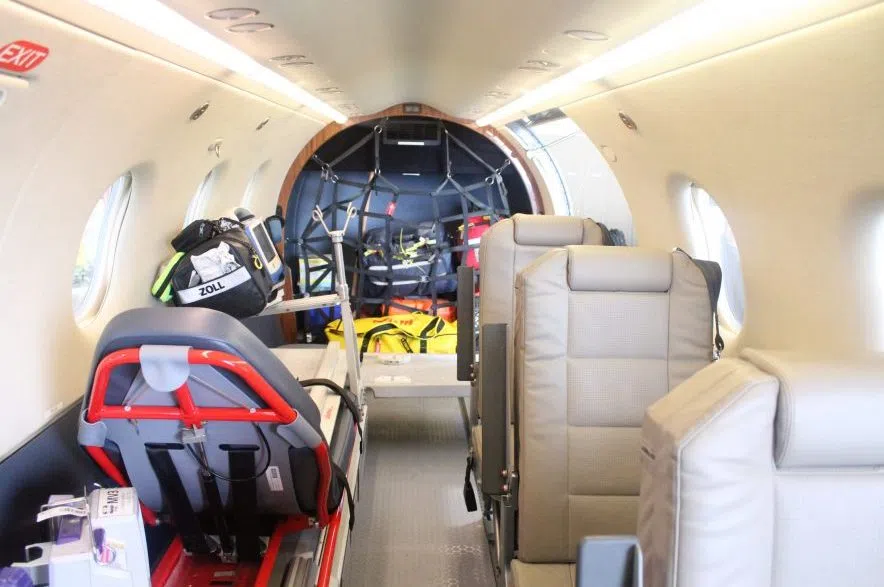La Ronge, SK — When a call comes in, Alex Bell and his colleagues have just 30 minutes to scramble — gathering gear, planning the flight, and taking off into the northern sky. No time to hesitate. No time to second guess. It’s a race against the clock.
“We get a little bit of patient information, we talk with our pilots, we come up with a game plan,” said Bell, a primary care paramedic in northern Saskatchewan.
Read more from Brittany Caffet:
- Saskatchewan’s own Nessie? The tale of the Turtle Lake Monster
- Discover how a doll empowered this Sask. girl with a rare disease
- Superstitions at play: Saskatchewan Roughriders share their gameday rituals
“Then we take off, get to wherever we’re going, meet the patients — usually in a clinic or hospital setting — and take them south.”
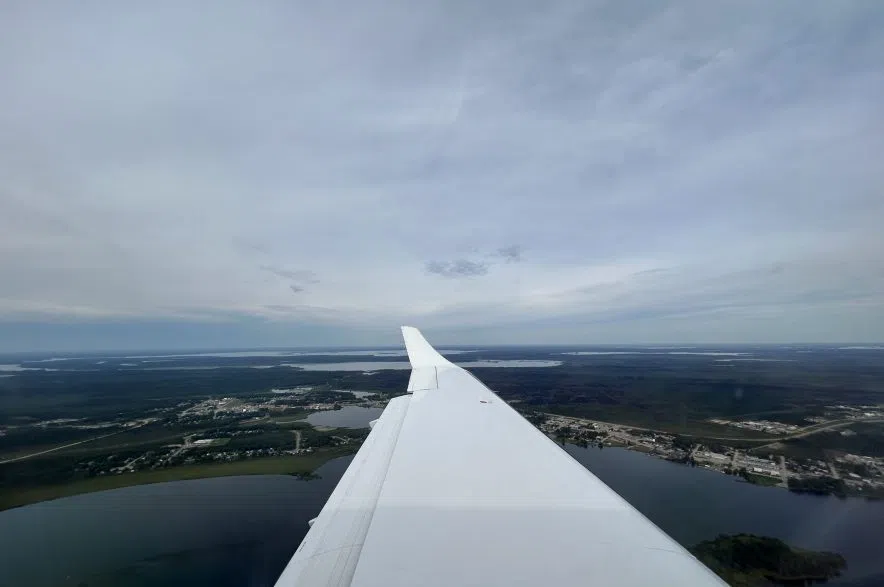
Approaching La Ronge, the PC-12 flies low over the forests and lakes that define the region — a new tool connecting isolated communities to urgent medical care. (Brittany Caffet/650 CKOM)
It’s a routine Bell knows well, but one that hasn’t always been easy. Until now, many of those flights relied on a Twin Otter — a tough but aging aircraft, unpressurized and slower than modern medevac planes.
“I can speak from experience of a couple more critical cases where time is of the essence,” he said. “Being in the Twin Otter, being a little bit slower, it’s a little bit more stressful of a situation.”
Listen to Brittany Caffet on Behind the Headlines:
Thankfully, the stress of long trips south aboard the Twin Otter will soon be a thing of the past.
With the arrival of a brand new, state-of-the-art medevac plane, paramedics like Bell can focus on treatment — not travel time — bringing faster, safer and more reliable care to patients across northern Saskatchewan.
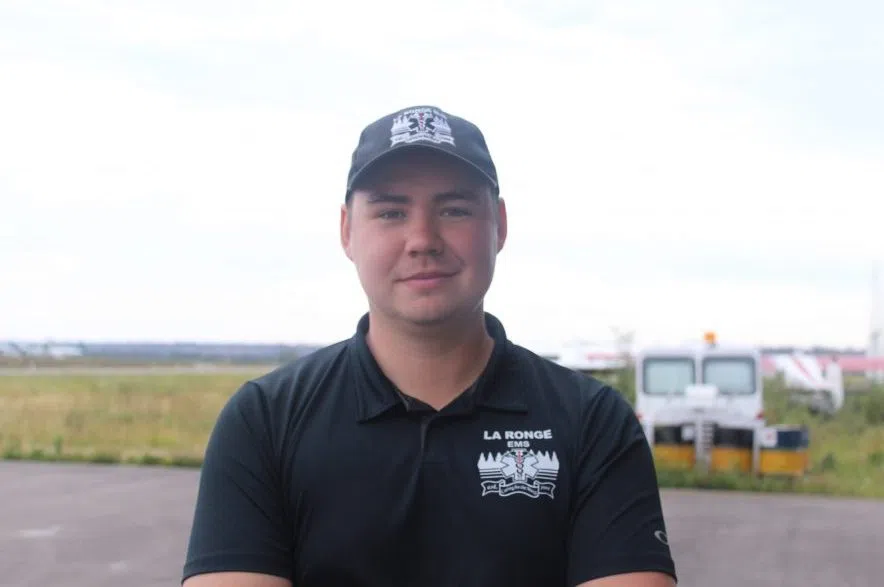
Alex Bell, a paramedic in La Ronge, says the PC-12’s speed and smooth ride make critical transports less stressful for patients and the teams caring for them. (Brittany Caffet/650 CKOM)
A lifeline upgraded
Amid a summer of wildfires, thick smoke and impassable roads, a quiet but crucial change is taking flight above the forests and lakes of northern Saskatchewan.
Rise Air, a 100 per cent Indigenous-owned aviation company, has brought in a powerful new tool for the north — the Pilatus PC-12. This $7 million investment isn’t just a sleek new plane; it’s a lifeline tailored for the tough realities of this land.
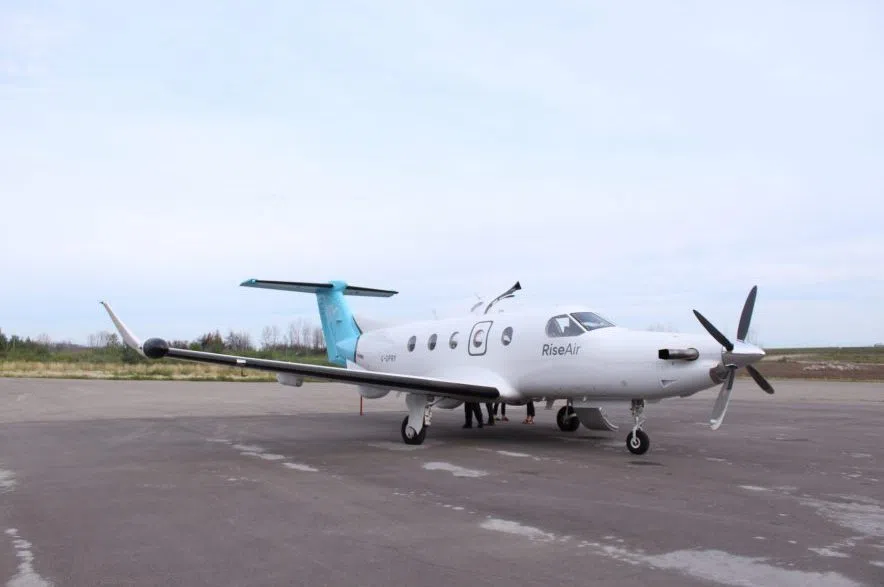
Rise Air’s new medevac aircraft, a Pilatus PC-12, sits on the tarmac in La Ronge — ready to cut down response times and reach more northern communities faster than ever. (Brittany Caffet/650 CKOM)
Carla Wayman, Vice President of Flight Operations at Rise Air, knows what makes the PC-12 special.
“It can get into smaller runways, airstrips that other aircraft can’t,” she said. “Places like Camsell Portage, South End — places that are hard to reach.”
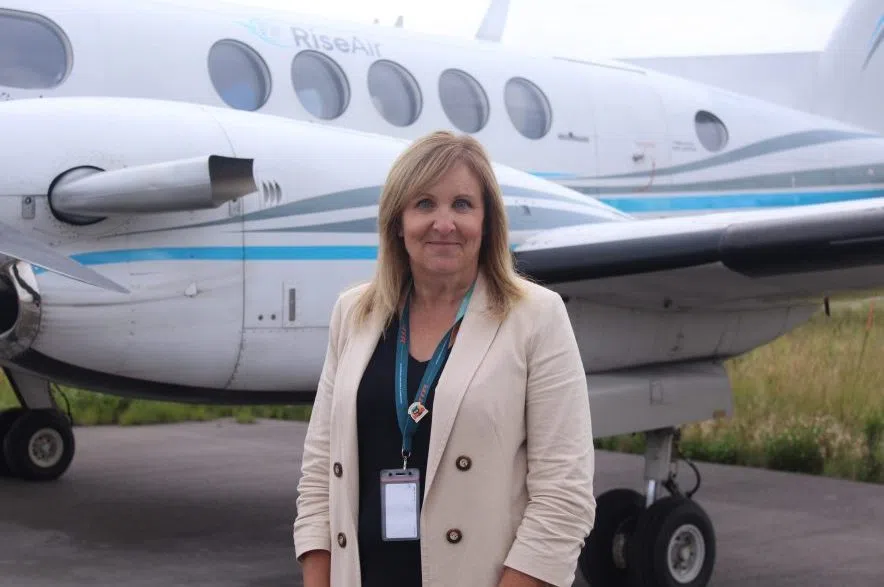
Carla Wayman of Rise Air says the PC-12 can access remote northern airstrips like Camsell Portage and South End — communities other aircraft often can’t reach. (Brittany Caffet/650 CKOM)
The Twin Otter has been a workhorse, battered but reliable. Yet inside, it shakes and rattles — a bumpy, unpressurized ride that can add strain to patients already fighting for their lives.
The new PC-12 offers a smooth, faster flight — a lifeline that could mean the difference between life and death.
“It’s pressurized, so the flight is smoother for patients and crew,” Wayman explained.
“And it’s faster. We flew up here from Saskatoon in 50 minutes. To drive, it’s about four hours one way.”
Time saved in the air can mean lives saved on the ground. For families waiting in remote communities — many hours from a hospital — every minute matters.
The PC-12 doesn’t just fly faster; it reaches places no other plane can land. It carries patients who once might have been left behind, giving them a chance at proper care.
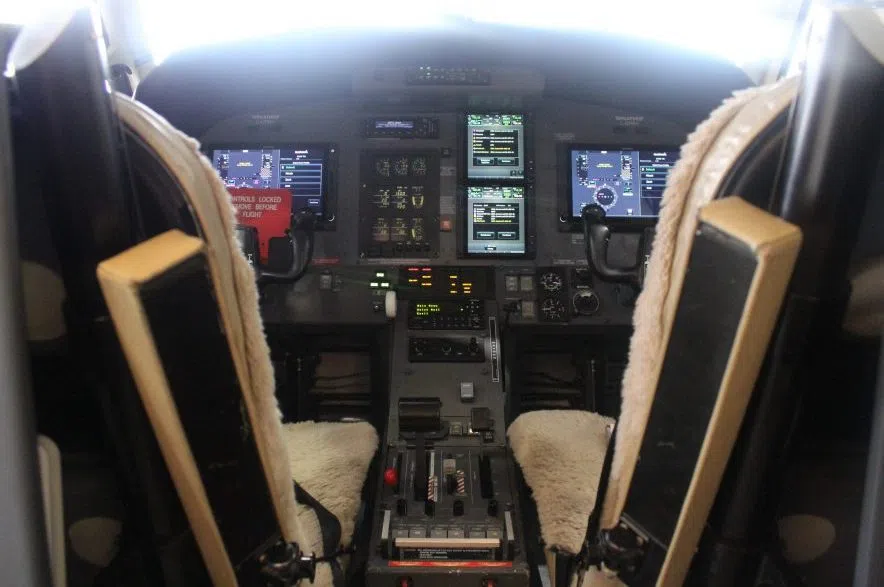
The cockpit features modern avionics that allow pilots to safely navigate Saskatchewan’s northern skies, even in challenging weather. (Brittany Caffet/650 CKOM)
More than just speed
Dr. Dan Irvine, medical adviser for La Ronge EMS, highlighted another breakthrough: “It can carry larger patients safely, with a bariatric lift system. That’s a big gap we’ve had for a long time.”
In fact, this plane is the first medevac aircraft in Saskatchewan equipped with bariatric capabilities. Until now, those needing special accommodations had to be transported using aircraft brought in from other provinces.
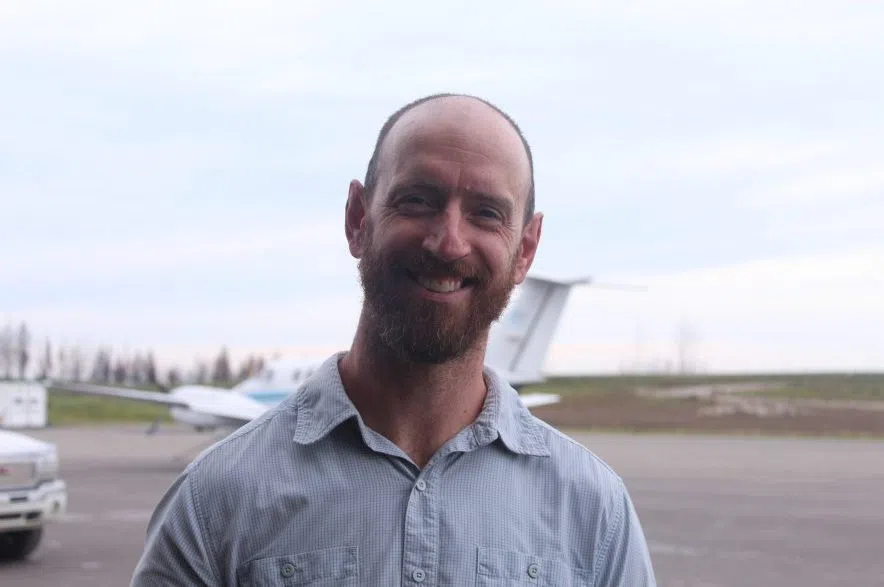
Dr. Dan Irvine says the PC-12 is filling a long-standing gap in care for larger patients. (Brittany Caffet/650 CKOM)
“If you’re in a fly-in-only community, and you don’t fit, we don’t have the aircraft to get you in a medical emergency,” he added. “That does not look good for you.”
The PC-12 changes that. It can accommodate patients up to 1,000 pounds and has a large rear door and lift system for safer, easier loading. These aren’t just technical specs — they’re lifelines for real people.
A vote of confidence in the north
Beyond the technical improvements, the arrival of the PC-12 is deeply symbolic. It signals that someone is investing — not just in machinery, but in the well-being of people in the north.
“I’ve been in northern Saskatchewan my whole life, and yeah, we do get overlooked,” Bell said. “So it is exciting that we are getting better equipment and transportation services to better suit the north.”
Abby Beshara, deputy mayor of La Ronge, shares that optimism: “We are a central hub for a lot of the north. We’re really happy to see Rise Air expand their level of services, and to continue to invest in the community and in the region for the well-being of our residents and the north.”
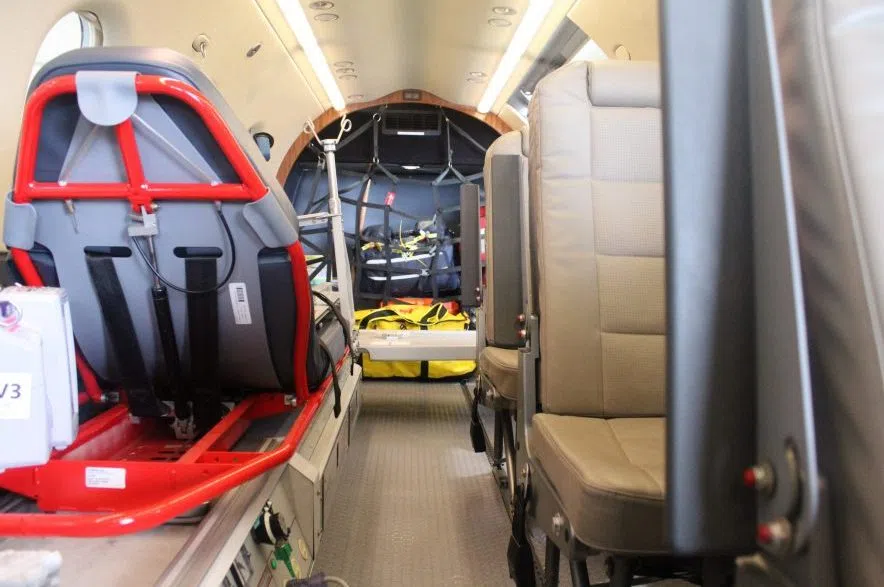
The layout is built for efficiency: stretcher space, monitors, and oxygen are all within arm’s reach — turning this plane into a flying ER. (Brittany Caffet/650 CKOM)
The PC-12 will be based in La Ronge — giving Rise Air and La Ronge EMS quicker access to communities throughout the Athabasca Basin and beyond. Places like Stony Rapids will now be just an hour away by air.
This isn’t just about faster flights. It’s about making sure no one gets left behind.
Year-round, 24/7 care
La Ronge EMS handles about 150 medevac flights every month, a relentless pace that underscores how vital this service is for the region.
“This is an exciting upgrade for Rise Air and La Ronge EMS,” Bell said. “Talking with all my colleagues, we’re all very excited to start working out of the PC-12 and continue providing care to the north.”
As they always have, they’ll be flying 24/7, 365 days a year, no matter the weather, no matter the distance.
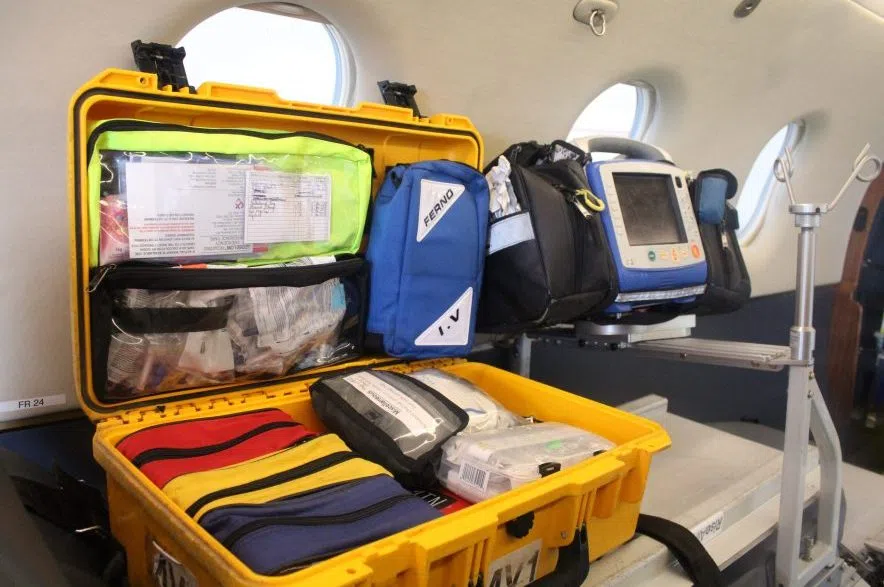
From cardiac monitors to advanced life support systems, the aircraft’s onboard equipment allows medevac crews to begin urgent treatment the moment a patient is on board. (Brittany Caffet/650 CKOM)
A bright spot in a dark season
This summer has been brutal for northern Saskatchewan. Wildfires forced evacuations, blocked roads and left skies heavy with smoke. But amid the hardship, this new medevac plane shines as a beacon of hope.
It’s more than just metal and engines. It’s a promise: the north matters. These communities are not forgotten.
And when someone needs help — skilled, compassionate, and timely help — it will now arrive faster, safer, and fully equipped to carry them to the care they need.
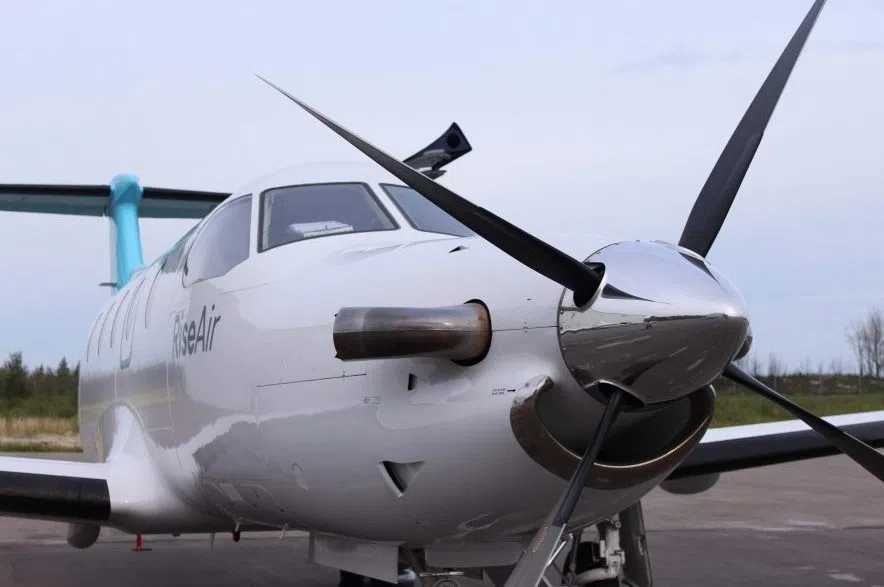
The medevac plane signals a new chapter in emergency response for northern Saskatchewan, where geography often challenges access to care. (Brittany Caffet/650 CKOM)
Read more from Brittany Caffet:
